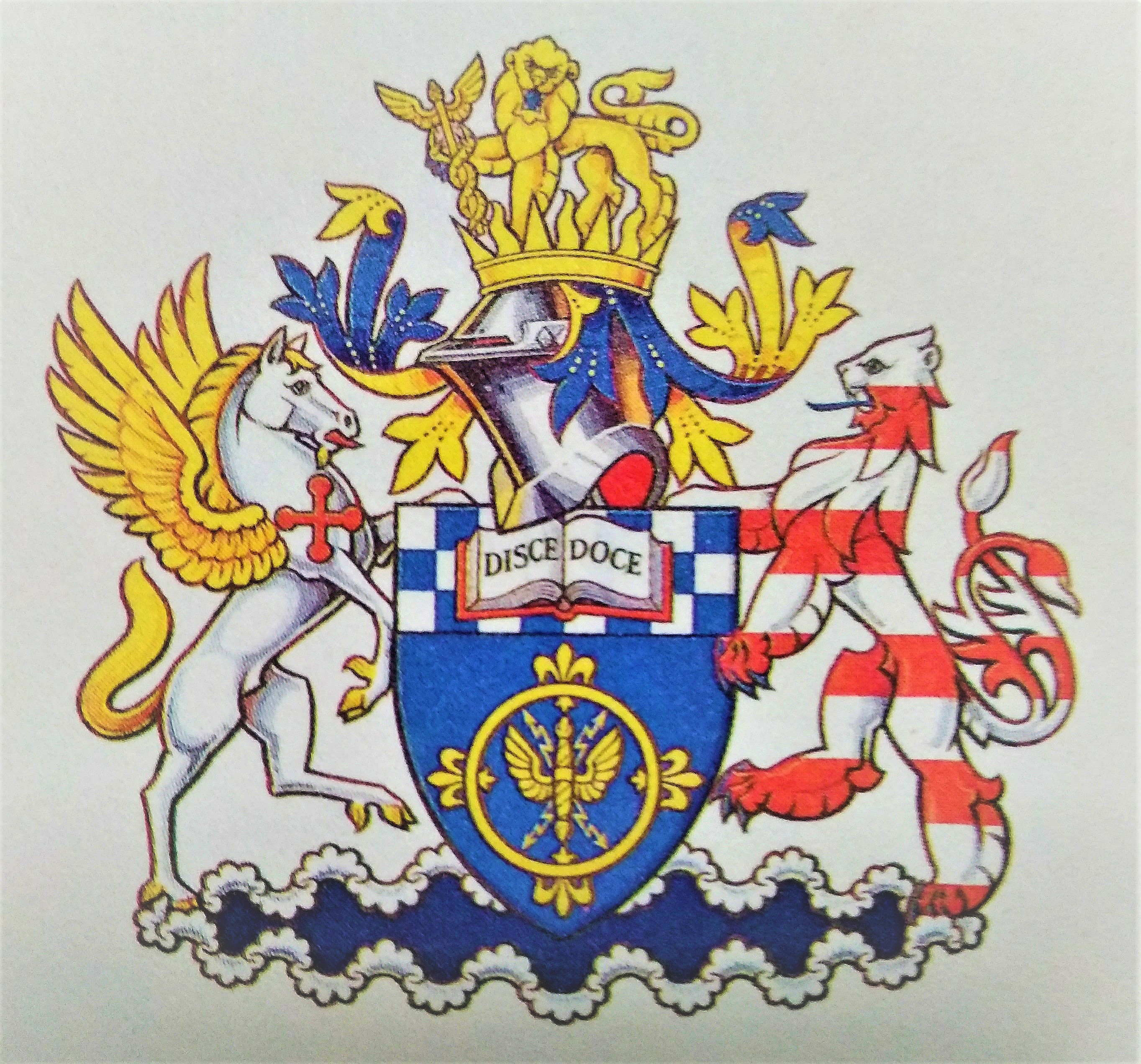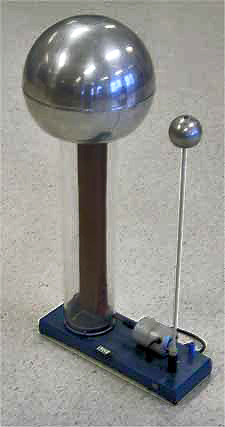|
James Wimshurst
James Wimshurst (13 April 1832 – 3 January 1903) was an English inventor, engineer and shipwright. Though Wimshurst did not patent his machines and the various improvements that he made to them, his refinements to the electrostatic generator led to its becoming widely known as the Wimshurst machine. Biography Wimshurst was born in 1832, in Poplar, East London, England. He was the son of Henry Wimshurst, a shipbuilder of Ratcliffe Cross Dock. Wimshurst was educated at Steabonheath House in London and became an apprentice at the Thames Ironworks until 1853 with James Mare. In 1865, he married Clara Tribble.Most obits say he married Clara Tubb, but the GRO index of marriages for Oct-Dec 1865, Vol1b, page736 indicates it was Clara Tribble (source for this is FreeBMD website giving a transcription of the GRO index) In 1865, after Wimshurst was transferred to Liverpool, he worked at the Liverpool Underwriters' Registry. In 1874, he joined the Board of Trade as a "chief shipwright sur ... [...More Info...] [...Related Items...] OR: [Wikipedia] [Google] [Baidu] |
Poplar, London
Poplar is a district in East London, England, the administrative centre of the London Borough of Tower Hamlets, borough of Tower Hamlets. Five miles (8 km) east of Charing Cross, it is part of the East End of London, East End. It is identified as a major district centre in the London Plan, with its district centre being Chrisp Street Market, a significant commercial and retail centre surrounded by extensive residential development. Poplar includes Poplar Baths, Blackwall Yard and Trinity Buoy Wharf and the locality of Blackwall, London, Blackwall. Originally part of the Stepney#Manor and Ancient Parish, Manor and Ancient Parish of Stepney, the ''Hamlet of Poplar'' had become an autonomous area of Stepney by the 17th century, and an independent parish in 1817. The Hamlet and Parish of Poplar included Blackwall, London, Blackwall and the Isle of Dogs. After a series of mergers, Poplar became part of the London Borough of Tower Hamlets in 1965. History Origin and administrati ... [...More Info...] [...Related Items...] OR: [Wikipedia] [Google] [Baidu] |
Liverpool
Liverpool is a city and metropolitan borough in Merseyside, England. With a population of in 2019, it is the 10th largest English district by population and its metropolitan area is the fifth largest in the United Kingdom, with a population of 2.24 million. On the eastern side of the Mersey Estuary, Liverpool historically lay within the ancient hundred of West Derby in the county of Lancashire. It became a borough in 1207, a city in 1880, and a county borough independent of the newly-created Lancashire County Council in 1889. Its growth as a major port was paralleled by the expansion of the city throughout the Industrial Revolution. Along with general cargo, freight, and raw materials such as coal and cotton, merchants were involved in the slave trade. In the 19th century, Liverpool was a major port of departure for English and Irish emigrants to North America. It was also home to both the Cunard and White Star Lines, and was the port of registry of the ocean li ... [...More Info...] [...Related Items...] OR: [Wikipedia] [Google] [Baidu] |
Institution Of Electrical Engineers
The Institution of Electrical Engineers (IEE) was a British professional organisation of electronics, electrical, manufacturing, and Information Technology professionals, especially electrical engineers. It began in 1871 as the Society of Telegraph Engineers. In 2006, it changed its name to the Institution of Engineering and Technology (IET). Notable past presidents have included Lord Kelvin (1889), Sir Joseph Swan (1898) and Sebastian de Ferranti (1910–11). Notable chairmen include John M. M. Munro (1910–11). History The IEE was founded in 1871 as the Society of Telegraph Engineers, changed its name in 1880 to the Society of Telegraph Engineers and Electricians and changed to the Institution of Electrical Engineers in 1888. It was Incorporated by a Royal Charter in 1921. In 1988 the Institution of Electrical Engineers (IEE) merged with the Institution of Electronic and Radio Engineers (IERE), originally the British Institution of Radio Engineers (Brit IRE) founded ... [...More Info...] [...Related Items...] OR: [Wikipedia] [Google] [Baidu] |
Museum Of Science And Industry (Chicago)
The Museum of Science and Industry (MSI) is a science museum located in Chicago, Illinois, in Jackson Park, in the Hyde Park neighborhood between Lake Michigan and The University of Chicago. It is housed in the former ''Palace of Fine Arts'' from the 1893 World's Columbian Exposition. Initially endowed by Julius Rosenwald, the Sears, Roebuck and Company president and philanthropist, it was supported by the Commercial Club of Chicago and opened in 1933 during the Century of Progress Exposition. Among the museum's exhibits are a full-size replica coal mine, captured during World War II, a model railroad, the command module of Apollo 8, and the first diesel-powered streamlined stainless-steel passenger train (''Pioneer Zephyr''). History The Palace of Fine Arts (also known as the Fine Arts Building) at the 1893 World's Columbian Exposition was designed by Charles B. Atwood for D. H. Burnham & Co. During the fair, the palace displayed paintings, prints, drawing, sculpture, an ... [...More Info...] [...Related Items...] OR: [Wikipedia] [Google] [Baidu] |
Wimshurst Cylindrical Machine
Wimshurst is an English surname. Notable people with the surname include: *Henry Wimshurst (1804–1884), English shipbuilder *James Wimshurst (1832–1903), English inventor, engineer and shipwright **Wimshurst machine, an electrostatic generator *Ken Wimshurst Kenneth Pinkney Wimshurst (23 March 1938 – 6 July 2017) was an English footballer who played as a right half. He made over 300 Football League appearances in the years after the Second World War. Career Ken Wimshurst played locally for South ... (1938–2017), English footballer and manager {{surname, Wimshurst English-language surnames ... [...More Info...] [...Related Items...] OR: [Wikipedia] [Google] [Baidu] |
Pidgeon Machine
Pidgeon is a surname from an archaic spelling of pigeon. People Notable persons with the surname include: * Caroline Pidgeon, Liberal Democrat politician in the United Kingdom * Emily Pidgeon (born 1989), English athlete * Frank Pidgeon (1825-1884), American baseball player * George C. Pidgeon (1872–1971), Canadian religious minister * Harry Pidgeon (1869–1954), American sailor, circumnavigator * Jeff Pidgeon, American writer and actor * John Pidgeon, Australian contractor and property developer * Lloyd Montgomery Pidgeon (1903–1999), Canadian chemist and metallurgist * Monica Pidgeon (1913–2009), British interior designer and architectural writer * Rebecca Pidgeon (born 1965), American actor and songwriter * Valmai Pidgeon, Australian philanthropist and construction contractor * W. R. Pidgeon, English inventor of an electrostatic machine * Walter Pidgeon (1897–1984), Canadian actor * William Pidgeon (1909-1981), Australian painter * William Pidgeon (archaeol ... [...More Info...] [...Related Items...] OR: [Wikipedia] [Google] [Baidu] |
Wilhelm Holtz
Wilhelm Holtz (15 October 1836 – 27 September 1913) was a German physicist who was a native of Saatel bei Barth, Mecklenburg. Between 1857 and 1862, he studied physics and natural sciences in Berlin, Dijon and Edinburgh. Afterwards, he performed experiments with electricity in Berlin, and later became associated with research at the universities of Halle and Greifswald, where in 1884 he became a professor of physics. In 1865 Holtz invented the "Holtz electrostatic influence machine", an electrostatic induction generator that converted mechanical work into electrostatic Electrostatics is a branch of physics that studies electric charges at rest ( static electricity). Since classical times, it has been known that some materials, such as amber, attract lightweight particles after rubbing. The Greek word for amb ... energy, needing only an initial charge to begin operation. In the following years, Holtz made modifications, and in the process, manufactured several more of th ... [...More Info...] [...Related Items...] OR: [Wikipedia] [Google] [Baidu] |
Ferdinand Carré
Ferdinand Philippe Edouard Carré (11 March 1824 – 11 January 1900) was a French engineer, born at Moislains ( Somme) on 11 March 1824. Carré is best known as the inventor of refrigeration equipment used to produce ice. He died on 11 January 1900 at Pommeuse (Seine-et-Marne). Work In 1850, Ferdinand's brother Edmond Carré (22 January 1833 – 7 May 1894) developed the first absorption refrigerator, using water and sulphuric acid. Ferdinand continued Edmond's work on the process and in 1858 developed a machine which used water as the absorbent and ammonia as refrigerant. His absorption machine was patented in France in 1859 and in the United States in 1860. In 1862 he exhibited his ice-making machine at the Universal London Exhibition, producing an output of per hour. His design was based on the gas–vapour system of Australian inventor James Harrison. In 1876 he equipped the ship ''Paraguay'' with an absorption refrigeration system, allowing the ship to carry frozen ... [...More Info...] [...Related Items...] OR: [Wikipedia] [Google] [Baidu] |
William Nicholson (scientist)
William Nicholson may refer to: *William Nicholson (English bishop) (1591–1672), Bishop of Gloucester *William Nicholson (chemist) (1753–1815), English chemist, publisher, and inventor *William Nicholson (artist, born 1781) (1781–1844), English portrait-painter and etcher * William Nicholson (poet) (1782–1849), Scottish poet, known as the Bard of Galloway *William Nicholson (U.S. Navy officer) (c. 1790–1872), U.S. Navy officer *William Adams Nicholson (1803–1853), English architect * William Newzam Nicholson (1816–1899), British Member of Parliament for Newark, 1880–1885 *William Nicholson (Australian politician) (1816–1865), Mayor of Melbourne and Premier of Victoria *William Nicholson (American bishop) (1822–1901), American bishop of the Reformed Episcopal Church *William Nicholson (distiller) (1824–1909), British distiller, politician, cricketer and cricket benefactor *William Nicholson, 1st Baron Nicholson (1845–1918), British field marshal and Chief of th ... [...More Info...] [...Related Items...] OR: [Wikipedia] [Google] [Baidu] |
Influence Machine
An electrostatic generator, or electrostatic machine, is an electrical generator that produces ''static electricity'', or electricity at high voltage and low continuous current. The knowledge of static electricity dates back to the earliest civilizations, but for millennia it remained merely an interesting and mystifying phenomenon, without a theory to explain its behavior and often confused with magnetism. By the end of the 17th century, researchers had developed practical means of generating electricity by friction, but the development of electrostatic machines did not begin in earnest until the 18th century, when they became fundamental instruments in the studies about the new science of electricity. Electrostatic generators operate by using manual (or other) power to transform mechanical work into electric energy, or using electric currents. Manual electrostatic generators develop electrostatic charges of opposite signs rendered to two conductors, using only electric forces, ... [...More Info...] [...Related Items...] OR: [Wikipedia] [Google] [Baidu] |
Vacuum Pump
A vacuum pump is a device that draws gas molecules from a sealed volume in order to leave behind a partial vacuum. The job of a vacuum pump is to generate a relative vacuum within a capacity. The first vacuum pump was invented in 1650 by Otto von Guericke, and was preceded by the suction pump, which dates to antiquity. History Early pumps The predecessor to the vacuum pump was the suction pump. Dual-action suction pumps were found in the city of Pompeii. Arabic engineer Al-Jazari later described dual-action suction pumps as part of water-raising machines in the 13th century. He also said that a suction pump was used in siphons to discharge Greek fire. The suction pump later appeared in medieval Europe from the 15th century.Donald Routledge Hill (1996), ''A History of Engineering in Classical and Medieval Times'', Routledge, pp. 143 & 150-2Donald Routledge Hill, "Mechanical Engineering in the Medieval Near East", ''Scientific American'', May 1991, pp. 64-69 (cf. Donald Ro ... [...More Info...] [...Related Items...] OR: [Wikipedia] [Google] [Baidu] |






